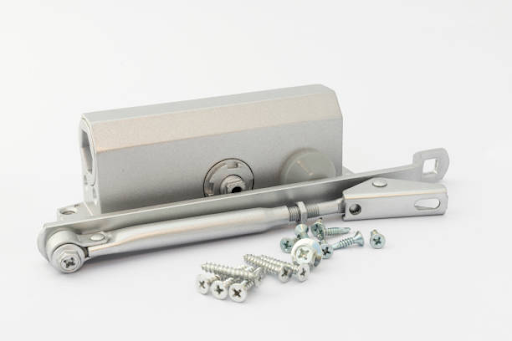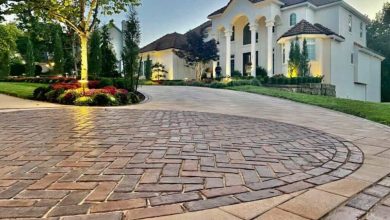Right Parts and Hinges for Enhanced Performance of Environmental Chambers

In controlled testing and experiments, environmental chambers are critical for simulating varying climatic conditions such as heat, freezing temperatures, humidity, and swift temperature changes. Businesses rely on these systems. Therefore, the precision and consistency as well as the performance and dependability of environmental chamber parts are critical.
The lifetime, effectiveness, and precision of chambers hinges, latches, seals, and control components are equally critical as industrial parts selection. In this article, we will focus on optimization within these high-performance parts to enhance environmental chambers in industrial and research workplaces.
Critical Accuracy in Environmental Chambers
Today’s businesses—automotive, aerospace, and electronics— utilize Environmental Chambers to mimic and test real-world conditions, including the simulating of environmental stresses.
Nonetheless, these chambers are only as effective as the systems that support them. With a defective hinge or degraded seal, the entire test procedure could be put at risk. This could result in inaccurate outcomes or even system downtime. This is why high-quality industrial parts are imperative; in this case, operational integrity is at stake.
Common functions environmental chambers must deliver:
- Airtight enclosure integrity
- High durability in high-cycling environments.
- Smooth, repeatable operation of doors and panels.
- Consistent temperature and humidity control.
Each of these is reliant on parts such as temperature-resistant seals, heavy-duty hinges, door locks, and latching mechanisms. With the right environmental chamber parts, optimizing these systems is achievable and worthwhile.
Key Components that Impact Chamber Performance
Knowing the fundamental parts of an environmental chamber helps procurement and engineering teams in making more educated choices regarding replacements and upgrades. Here, the most critical parts that need consideration are listed.
High-Performance Hinges
Hinges are one of the most essential and often overlooked industrial parts in environmental chambers. These hinges must endure constant stress while upholding alignment and the integrity of the chamber door. For hinges exposed to extreme temperatures or corrosive environments, durable materials such as stainless steel or high-grade alloys are a must. These materials need to be insulated thermally or have seals to reduce heat transfer.
Hinges that are suitable for the environmental chambers will:
- Consistently ensure door operation.
- Prevent sagging or misalignment from occurring over time.
- Improve the energy efficiency of the environmental chambers.
The performance and durability of the chambers can be enhanced through the use of specialized parts such as lift-off or thermally-isolated hinges.
Airtight Seals and Gaskets
Environmental chambers use tight sealing systems to ensure that internal temperatures and humidity levels remain stable. The door gaskets must ensure that no air or moisture can get in or escape the chamber.
Aging or degraded seals lead to:
- Test inaccuracies
- Energy loss
- Increased wear on HVAC systems
The accuracy of the environmental chambers can be preserved by using high-performance industrial-grade materials as gaskets which will withstand thousands of test cycles.
Locking and Latching Mechanisms
Every chamber requires efficient locking mechanisms which will keep the doors securely closed during operation. In the cases of both high-pressure and vacuum testing, the locking mechanisms must be able to withstand significant stress.
Locks must also be:
- Easier to use ergonomically.
- Insulated thermally to prevent the transfer of heat.
- Corrosion protected for improved working longevity.
These factors are crucial to safety and reliability; therefore, are considered to be essential industrial parts of an environmental chamber system.
Sensors and Control Hardware
Chambers often integrate sophisticated sensors along with temperature and humidity sensors and pressure control for monitoring. Though they may not be mechanical in the purest sense, these pieces are still classified as core industrial parts because of the major influence they have on performance.
Outdated controllers and sensors which are improperly calibrated can:
- Alter the testing parameters.
- Impact the efficiency of the system negatively.
- Raise the energy costs.
Taking care of these control parts helps in ensuring precision and repeatability for test outcomes.
Environmental Chamber Parts Selection Criteria
Not every industrial part can be utilized in the environmental chamber. These different types of chambers have a specialized nature, and as such, the parts must adhere to strict requirements.
Material Compatibility
Internal components must withstand moisture exposure, salt spray, heat, and various chemicals in the operating environment. Preferred materials include stainless steel and aluminum alloys, in addition to some thermoplastics.
Temperature and Humidity Tolerance
Parts should be rated for the maximum operating range of the chamber. Components for cryogenic testing chambers will differ from those for high-heat chambers.
Durability and Lifecycle
Frequent use without wear makes parts suitable for use in environmental chambers, especially those designed for high-cycle testing.
Ease of Maintenance
Minimizing the time needed for adjustments, replacements, or inspections of components directly mitigates risk for unexpected halts in operation.
Informed decisions in the factors above allow engineers and purchasing managers to precisely select environmental chamber parts that enhance operational reliability and preserve system integrity.
Insights for Industrial Suppliers and Engineering Teams
For B2B operations, ensuring optimal performance in environmental chambers requires a combination of thoughtful sourcing and well-considered system design.
- Stock Specialized Components: Distributors may not carry parts designed for extreme heat or humidity. Make them available to meet a specific need.
- Provide Technical Support: Detailed assistance in choosing a specific hinge, lock, or seal for a chamber helps the customer to mitigate risks and enhances performance.
- Stay Current with Innovations: Components need to change as the components for the testing environments improve. Be aware of advancements in materials, coatings, and designs.
- Partner with OEMs: Strong partnerships with equipment manufacturers guarantee that the supplied replacement components are manufactured as per the original design requirements.
- Implement Preventive Maintenance Plans: Advise clients to replace components based on their usage cycles to eliminate unexpected breakdowns.
Participating actively through value-added services, including offering out-of-the-box support, targeted guidance, and tailored maintenance, helps suppliers solidify their position in the long-term industrial productivity of their clients.
Conclusion
Achieving precise operational performance of environmental chambers differs from having advanced temperature control and cutting-edge sensors. Every chamber component, including hinges, gaskets, and locking mechanisms, must work perfectly under extreme conditions. By meticulously choosing and servicing environmental chamber parts, B2B suppliers can enhance precision, improve operational safety, and prolong the lifecycle of the critical testing equipment.
Quality industrial parts play a vital role in fostering innovation, reliability, and sustainability in a business as industrial competition heightens and compliance regulations grow. Spending the right amount on parts today saves significant money on costly downtimes in the future as well as guarantees trusted and precise test results.

Source: Right Parts and Hinges for Enhanced Performance of Environmental Chambers


